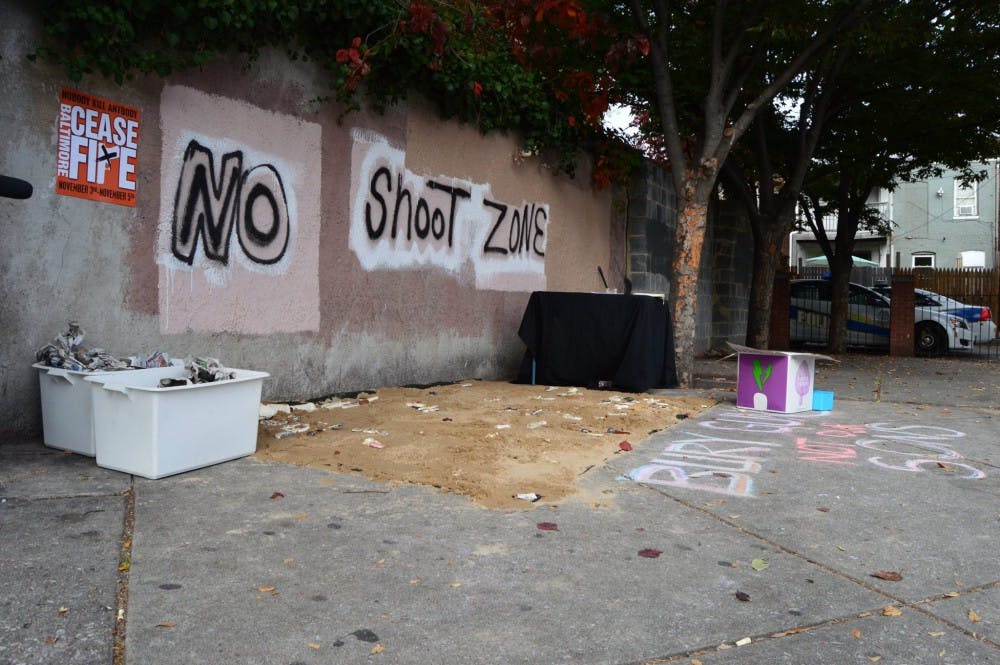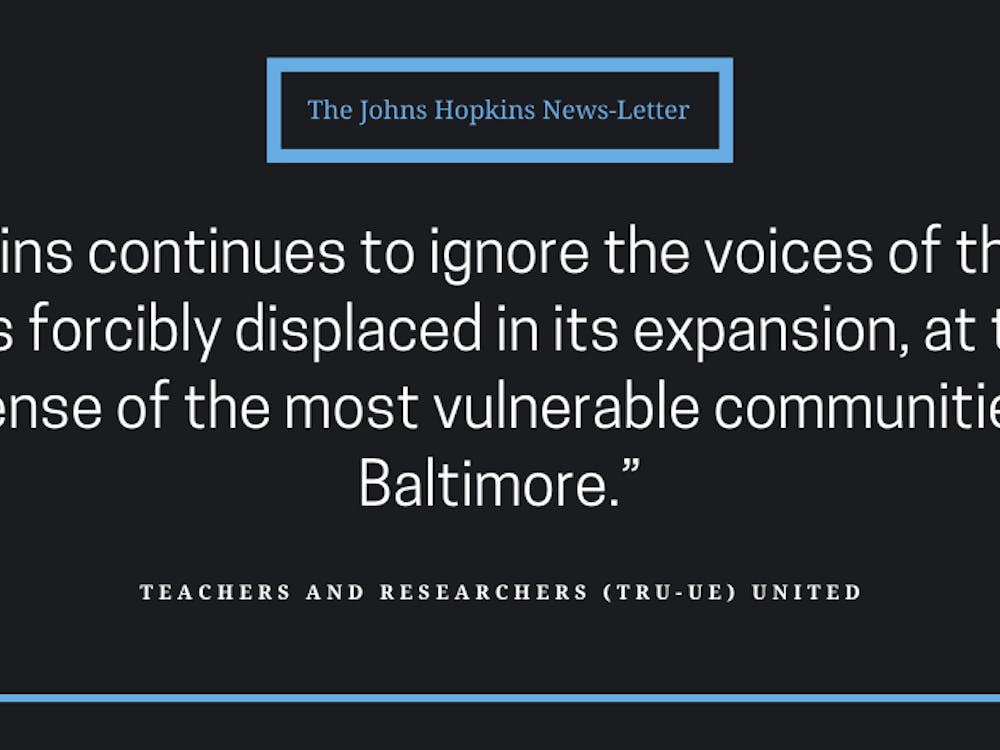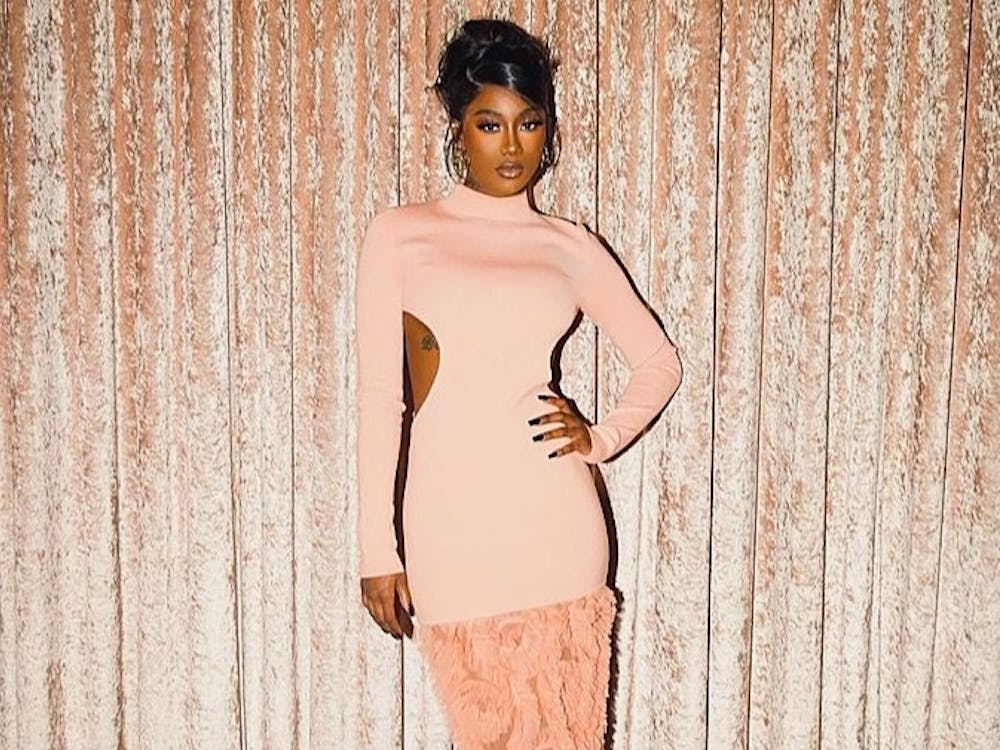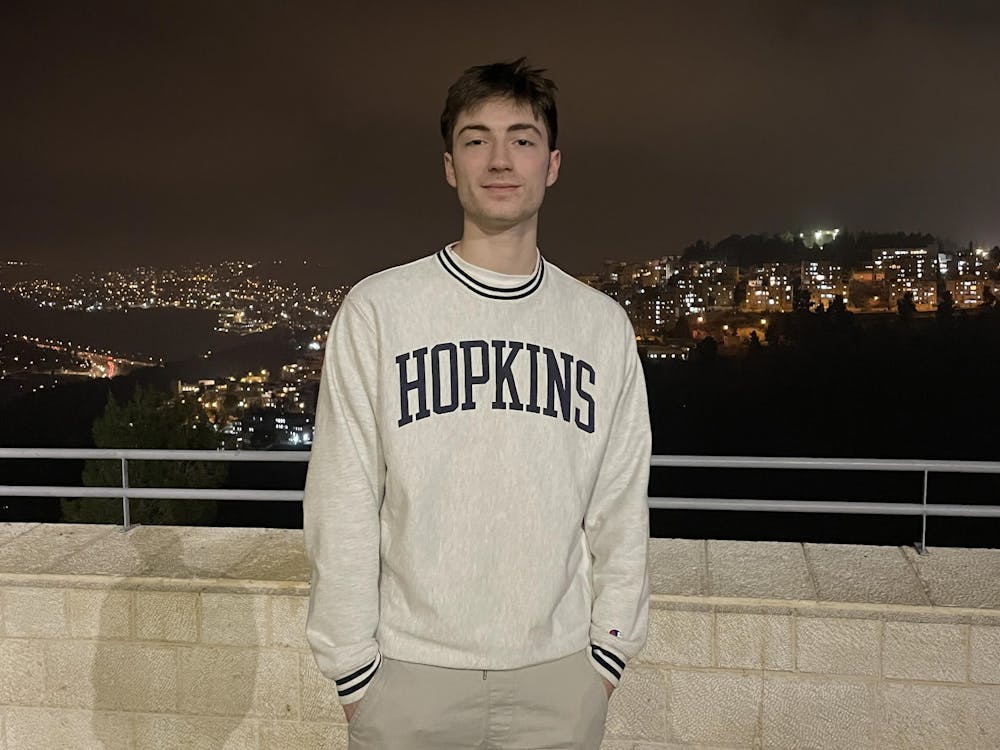Baltimore City’s second Ceasefire Weekend took place Friday through Sunday, organized by the group Baltimore Ceasefire 365 (Ceasefire). The organization called for a 72-hour citywide halt on homicides and shootings with the slogan, “Nobody Kill Anybody.” The group plans to hold these events every three months.
Throughout the city, Ceasefire held various events with the goal of raising awareness of the rising homicide rate in Baltimore and encouraging discussion within the community. These events included talks, art exhibitions and community walks.
On Sunday, Ceasefire organized a candlelight vigil on Brentwood and 32nd Street. 301 candles were lit for the 301 lives lost this year to homicide. As of press time, this number has increased to 303. Passersby were encouraged to light additional candles, and many who did said they knew someone who was a victim of homicide.
Marcus Dagold, a Ceasefire volunteer, said that being a part of the group has helped him engage with different communities. He hopes that Ceasefire Weekend will help others to step outside of their comfort zones and address citywide issues.
“I hope and pray that this will help make a difference. [Ceasefire has] helped me come out of my secluded life and be more brave,” Dagold said. “A year ago, I wouldn’t have been putting a poster on the corner of Greenmount and 33rd.”
Sophomore Justin Cho attended the candlelight vigil. He said that learning about the issues of crime and poverty in Baltimore inspired him to get involved with the community.
“I really got into social issues in my freshman year when I came to Baltimore. I didn’t know much about the city,” Cho said.
Susan You, a sophomore, also attended some of the Ceasefire Weekend events. She said the events helped her to learn about the City’s past and about Ceasefire’s goals for the future.
You said she enjoyed attending a talk titled “Marylanders to Prevent Gun Violence,” where speakers shared their personal experiences related to gun violence.
“I thought it was so powerful. It brought a humanistic perspective to gun violence,” You said. “[The speakers] always had a statement of action at the end about what we can do from here on out by channeling our emotions in a positive way.”
Sophomore Katherine Fu said that the weekend’s events helped her to connect what she had learned in public health classes to the real phenomenon of violence in Baltimore.
Fu said that she hopes more students will take their learning beyond the classroom, and choose to engage with the community.
“It was really interesting that there are so many community awareness events that go on, but not a lot of Hopkins students know about it,” Fu said. “I think it’s really amazing and hope in the future more Hopkins students will be more involved.”
Despite efforts by Ceasefire volunteers, one homicide occurred over the weekend. Washington metro police officer Tony Anthony Mason, Jr. was shot and killed on Nov. 4. During the first Ceasefire weekend, which took place on Aug. 4-6, two homicides occurred.
Throughout the weekend, local artist Joules Fallier showcased her installation titled Bury Guns Not Our Sons: Stop the Slaughter of Our Daughters. The piece is a collection of ceramic guns and other weapons that each represent a life lost to homicide in Baltimore in 2015.
On Saturday, the installation was set up on the corner of Pennsylvania Ave and North Ave along with a small plot of sand in which passersby could physically bury the guns.
Fallier said she was inspired to create the piece after hearing about the rising number of homicides in the city. Fallier catalogued each case in real time and learned about each victim.
“I would look them up on Facebook. I would maybe go to the place. I would look up their family,” she said. “I would do as much as I could to find out about them as people and then make a monument for them.”
She said that she wanted to engage her community and reflect on the issues she had been previously ignoring.
“As an artist, was I turning away from the problem or leaning into it? I decided to lean into it and to look carefully at each of the murders as they happened throughout the year,” Fallier said.
Using art as a medium for expression has allowed Fallier to confront the homicide problem in Baltimore and help others understand the gravity of the situation.
“Instead of thinking I was smarter or better than the problem, I tried to get to know [the victims] in a more humbling and honest way,” she said.
Fallier hopes that her art installation will have an impact on the community and force others to reflect on the homicide problem in Baltimore as well.
“So what do I want them to take away? A vibration, a rumble, a thought, a feeling… anything at all,” Fallier said. “Even if they’re pissed off at me, and I occasionally get that. That’s good! As long as they’re feeling something.”
Sarah Y. Kim and Alyssa Wooden contributed rerporting.























Please note All comments are eligible for publication in The News-Letter.